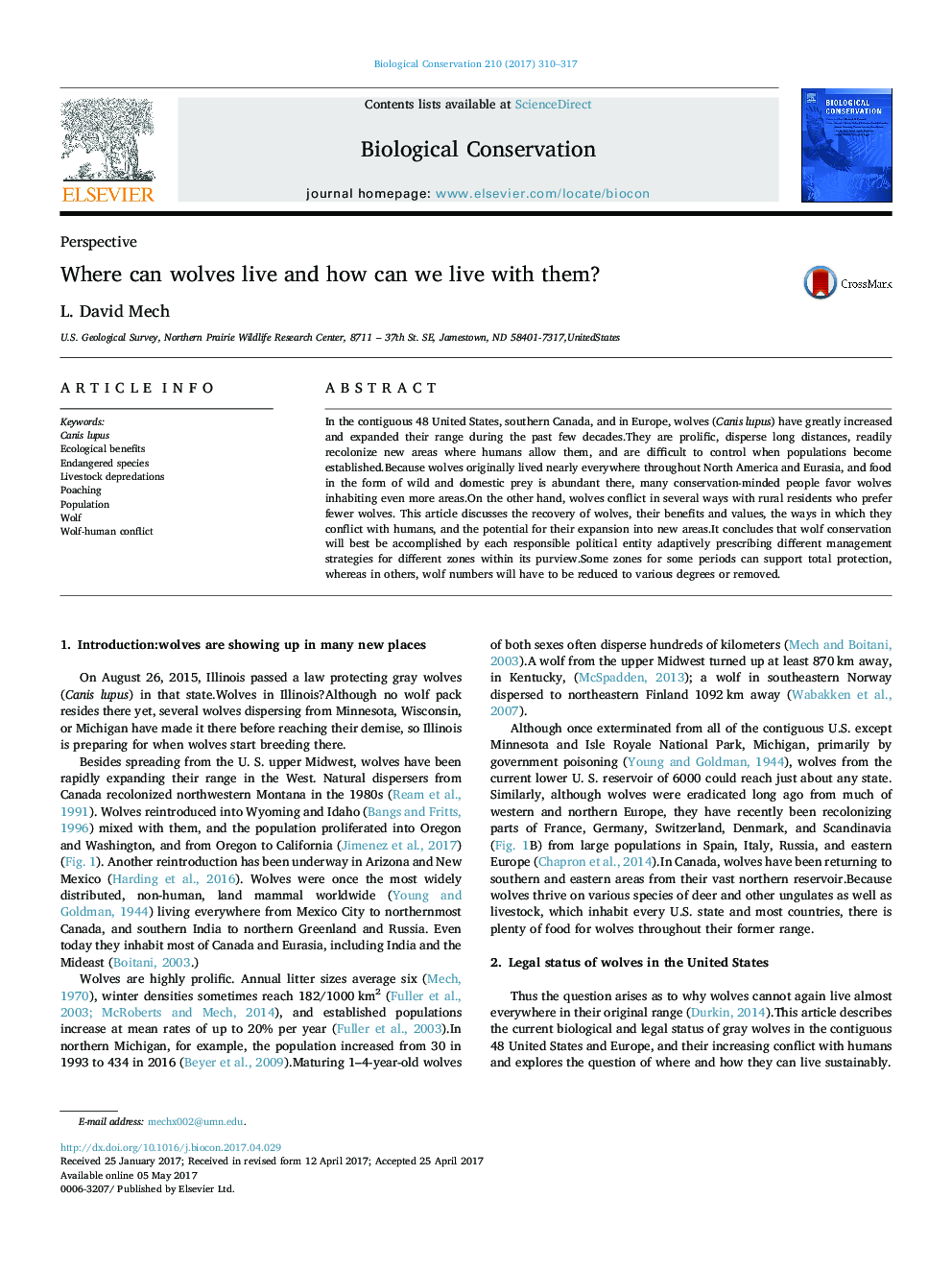| کد مقاله | کد نشریه | سال انتشار | مقاله انگلیسی | نسخه تمام متن |
|---|---|---|---|---|
| 5743199 | 1412300 | 2017 | 8 صفحه PDF | دانلود رایگان |
- Wolves are recolonizing many areas in the United States, southern and eastern Canada, and Europe.
- Once established, wolves are prolific and wolf populations are difficult to control.
- Many urbanites revere wolves whereas many rural residents fear and dislike them, resulting in considerable controversy.
- Wolves could live in many more places if livestock were better protected and more wild land could be preserved.
- Ultimately, the use of adaptive management and zoning will be required to most sustainably foster wolf conservation
In the contiguous 48 United States, southern Canada, and in Europe, wolves (Canis lupus) have greatly increased and expanded their range during the past few decades.They are prolific, disperse long distances, readily recolonize new areas where humans allow them, and are difficult to control when populations become established.Because wolves originally lived nearly everywhere throughout North America and Eurasia, and food in the form of wild and domestic prey is abundant there, many conservation-minded people favor wolves inhabiting even more areas.On the other hand, wolves conflict in several ways with rural residents who prefer fewer wolves. This article discusses the recovery of wolves, their benefits and values, the ways in which they conflict with humans, and the potential for their expansion into new areas.It concludes that wolf conservation will best be accomplished by each responsible political entity adaptively prescribing different management strategies for different zones within its purview.Some zones for some periods can support total protection, whereas in others, wolf numbers will have to be reduced to various degrees or removed.
Journal: Biological Conservation - Volume 210, Part A, June 2017, Pages 310-317
